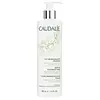What's inside
What's inside
 Key Ingredients
Key Ingredients

No key ingredients
 Benefits
Benefits

 Concerns
Concerns

 Ingredients Side-by-side
Ingredients Side-by-side

Water
Skin ConditioningOlea Europaea Fruit Oil
MaskingGlycerin
HumectantCetearyl Olivate
Rosa Canina Fruit Oil
EmollientCetearyl Alcohol
EmollientAlcohol Denat.
AntimicrobialXanthan Gum
EmulsifyingSorbitan Olivate
EmulsifyingSodium Benzoate
MaskingPotassium Sorbate
PreservativeCitric Acid
BufferingLimonene
PerfumingCitronellol
PerfumingPelargonium Graveolens Leaf Oil
Geraniol
PerfumingCitrus Aurantium Sinensis Peel Extract
Skin ConditioningLinalool
PerfumingCitrus Aurantium Bergamia Fruit Oil
MaskingCitral
PerfumingCitrus Limon Peel Oil
MaskingWater, Olea Europaea Fruit Oil, Glycerin, Cetearyl Olivate, Rosa Canina Fruit Oil, Cetearyl Alcohol, Alcohol Denat., Xanthan Gum, Sorbitan Olivate, Sodium Benzoate, Potassium Sorbate, Citric Acid, Limonene, Citronellol, Pelargonium Graveolens Leaf Oil, Geraniol, Citrus Aurantium Sinensis Peel Extract, Linalool, Citrus Aurantium Bergamia Fruit Oil, Citral, Citrus Limon Peel Oil
Water
Skin ConditioningCetearyl Isononanoate
EmollientButylene Glycol
HumectantGlycerin
HumectantCetyl Alcohol
EmollientPrunus Amygdalus Dulcis Oil
Skin ConditioningSimmondsia Chinensis Seed Oil
EmollientSodium Cocoyl Glutamate
CleansingDecyl Glucoside
CleansingButyrospermum Parkii Butter Extract
Skin ConditioningMaltodextrin
AbsorbentCarbomer
Emulsion StabilisingPotassium Cetyl Phosphate
EmulsifyingCaprylyl Glycol
EmollientHydrolyzed Vegetable Protein
Skin ConditioningAcrylates/C10-30 Alkyl Acrylate Crosspolymer
Emulsion StabilisingPotassium Sorbate
PreservativeSodium Hydroxide
BufferingTrehalose
HumectantTocopherol
AntioxidantParfum
MaskingAvena Sativa Kernel Extract
AbrasiveCentaurea Cyanus Flower Extract
AstringentPalmitoyl Grape Seed Extract
Skin ConditioningHexyl Cinnamal
PerfumingLinalool
PerfumingLimonene
PerfumingPlant Ash
Water, Cetearyl Isononanoate, Butylene Glycol, Glycerin, Cetyl Alcohol, Prunus Amygdalus Dulcis Oil, Simmondsia Chinensis Seed Oil, Sodium Cocoyl Glutamate, Decyl Glucoside, Butyrospermum Parkii Butter Extract, Maltodextrin, Carbomer, Potassium Cetyl Phosphate, Caprylyl Glycol, Hydrolyzed Vegetable Protein, Acrylates/C10-30 Alkyl Acrylate Crosspolymer, Potassium Sorbate, Sodium Hydroxide, Trehalose, Tocopherol, Parfum, Avena Sativa Kernel Extract, Centaurea Cyanus Flower Extract, Palmitoyl Grape Seed Extract, Hexyl Cinnamal, Linalool, Limonene, Plant Ash
 Reviews
Reviews

Ingredients Explained
These ingredients are found in both products.
Ingredients higher up in an ingredient list are typically present in a larger amount.
Glycerin is already naturally found in your skin. It helps moisturize and protect your skin.
A study from 2016 found glycerin to be more effective as a humectant than AHAs and hyaluronic acid.
As a humectant, it helps the skin stay hydrated by pulling moisture to your skin. The low molecular weight of glycerin allows it to pull moisture into the deeper layers of your skin.
Hydrated skin improves your skin barrier; Your skin barrier helps protect against irritants and bacteria.
Glycerin has also been found to have antimicrobial and antiviral properties. Due to these properties, glycerin is often used in wound and burn treatments.
In cosmetics, glycerin is usually derived from plants such as soybean or palm. However, it can also be sourced from animals, such as tallow or animal fat.
This ingredient is organic, colorless, odorless, and non-toxic.
Glycerin is the name for this ingredient in American English. British English uses Glycerol/Glycerine.
Learn more about GlycerinLimonene is a fragrance that adds scent and taste to a formulation.
It's found in the peel oil of citrus fruits and other plants such as lavender and eucalyptus. The scent of limonene is generally described as "sweet citrus".
Limonene acts as an antioxidant, meaning it helps neutralize free radicals.
When exposed to air, oxidized limonene may sensitize the skin. Because of this, limonene is often avoided by people with sensitive skin.
The term 'fragrance' is not regulated in many countries. In many cases, it is up to the brand to define this term. For instance, many brands choose to label themselves as "fragrance-free" because they are not using synthetic fragrances. However, their products may still contain ingredients such as essential oils that are considered a fragrance.
Learn more about LimoneneLinalool is a fragrance and helps add scent to products. It's derived from common plants such as cinnamon, mint, citrus, and lavender.
Like Limonene, this ingredient oxidizes when exposed to air. Oxidized linalool can cause allergies and skin sensitivity.
This ingredient has a scent that is floral, spicy tropical, and citrus-like.
Learn more about LinaloolPotassium Sorbate is a preservative used to prevent yeast and mold in products. It is commonly found in both cosmetic and food products.
This ingredient comes from potassium salt derived from sorbic acid. Sorbic acid is a natural antibiotic and effective against fungus.
Both potassium sorbate and sorbic acid can be found in baked goods, cheeses, dried meats, dried fruit, ice cream, pickles, wine, yogurt, and more.
You'll often find this ingredient used with other preservatives.
Learn more about Potassium SorbateWater. It's the most common cosmetic ingredient of all. You'll usually see it at the top of ingredient lists, meaning that it makes up the largest part of the product.
So why is it so popular? Water most often acts as a solvent - this means that it helps dissolve other ingredients into the formulation.
You'll also recognize water as that liquid we all need to stay alive. If you see this, drink a glass of water. Stay hydrated!
Learn more about Water